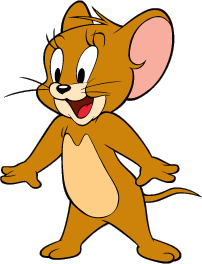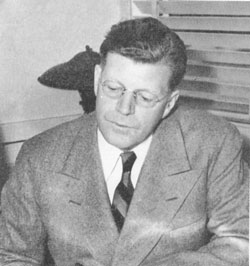
Frederick Clinton Quimby was an American animation producer and journalist best known for producing the Tom and Jerry cartoon series, for which he won seven Academy Awards for Best Animated Short Films. He was the film sales executive in charge of the Metro-Goldwyn-Mayer cartoon studio, which included Tex Avery, Droopy, Butch Dog, Barney Bear, Michael Lah and multiple one-shot cartoons, as well as William Hanna and Joseph Barbera, the creators of Tom and Jerry.

Anchors Aweigh is a 1945 American musical comedy film directed by George Sidney, starring Frank Sinatra, Kathryn Grayson, and Gene Kelly, with songs by Jule Styne and Sammy Cahn. The film also features José Iturbi, Pamela Britton, Dean Stockwell, and Sharon McManus.

The golden age of American animation was a period in the history of U.S. animation that began with the popularization of sound synchronized cartoons in 1928 and gradually ended in the 1960s when theatrical animated shorts started to lose popularity to the newer medium of television. Animated media from after the golden age, especially on television, were produced on cheaper budgets and with more limited techniques between the 1960s and 1980s.
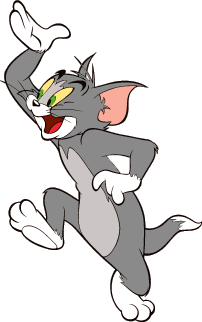
Thomas Jasper "Tom" Cat Sr. is a fictional character and one of the two titular main protagonists in Metro-Goldwyn-Mayer's series of Tom and Jerry theatrical animated short films. Created by William Hanna and Joseph Barbera, he is a grey and white anthropomorphic domestic short haired tuxedo British cat who first appeared in the 1940 MGM animated short Puss Gets the Boot. The cat was known as "Jasper" during his debut in the short; however, beginning with his next appearance in The Midnight Snack he was known as "Tom" or "Thomas".
Tom and Jerry is an American animated media franchise and series of comedy short films created in 1940 by William Hanna and Joseph Barbera. Best known for its 161 theatrical short films by Metro-Goldwyn-Mayer, the series centers on the rivalry between the titular characters of a cat named Tom and a mouse named Jerry. Many shorts also feature several recurring characters.
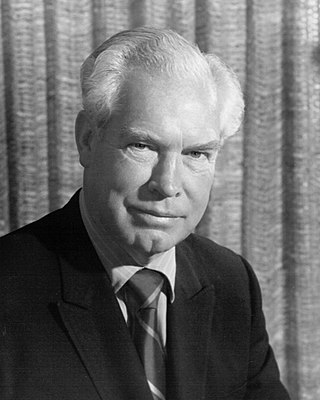
William Denby Hanna was an American animator, voice actor, and occasional musician who is best known for co-creating Tom and Jerry and providing the vocal effects for the series' title characters. Alongside Joseph Barbera, he also founded the animation studio and production company Hanna-Barbera.

Joseph Roland Barbera was an American animator and cartoonist, best known as the co-founder of the animation studio Hanna-Barbera.

Puss Gets the Boot is a 1940 American animated short film and is the first short in what would become the Tom and Jerry cartoon series, though neither are yet referred to by these names. It was directed by William Hanna and Joseph Barbera, and produced by Rudolf Ising. It is based on the Aesop's Fable, The Cat and the Mice. As was the practice of MGM shorts at the time, only Rudolf Ising is credited. It was released to theaters on February 10, 1940, by Metro-Goldwyn-Mayer.

The Tom and Jerry Comedy Show is an American animated television series produced by Filmation for MGM Television featuring the popular cartoon duo Tom and Jerry. The show first aired on September 6, 1980 on CBS and continued until December 13 the same year. Its episodes were eventually added to syndicated Tom and Jerry packages in 1983. Episodes of the show also occasionally appeared on Cartoon Network and Boomerang.
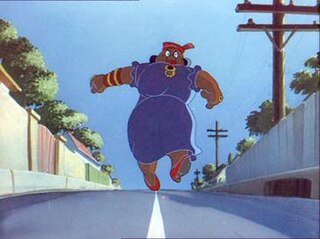
Mammy Two Shoes is a fictional character in MGM's Tom and Jerry cartoons. She is a middle-aged African American woman who is the housemaid in the house which Tom and Jerry reside. But the fact that she has her own bedroom in the short Sleepy-Time Tom (1951) raises the possibility of her being the owner of the house, as no other human is present in the house in shorts she appears. She would scold and discipline Tom whenever she believed he was misbehaving; Jerry would sometimes be the cause of Tom's getting in trouble.
This is a complete list of the 166 shorts in the Tom and Jerry series produced and released between 1940 and 2021. Of these, 162 are theatrical shorts, one is a made-for-TV short, one is a two-minute sketch shown as part of a telethon, and two are special shorts released on HBO Max.

The Metro-Goldwyn-Mayer cartoon studio was an American animation studio operated by Metro-Goldwyn-Mayer (MGM) during the Golden Age of American animation. Active from 1937 until 1957, the studio was responsible for producing animated shorts to accompany MGM feature films in Loew's Theaters, which included popular cartoon characters Tom, Jerry, Droopy, Butch, Spike, Tyke, and Barney Bear.

The Tom and Jerry Spotlight Collection is a series of two-disc DVD sets released by Warner Home Video. Originally planned as an uncensored, chronological set, the issued Spotlight Collection sets include selected Tom and Jerry shorts on each volume. Volume 1 was released on October 19, 2004, Volume 2 on October 25, 2005, and the third and final volume on September 11, 2007. On October 15, 2019, the set, which consists of 4 discs, was repackaged with some errors fixed.

Spike and Tyke are fictional characters from the Tom and Jerry animated film series, created by William Hanna and Joseph Barbera. Spike is portrayed as an English Bulldog, who is generally amiable and friendly, and a loving father to his son Tyke in several episodes. However, Spike's character also has a very stern, and fierce side, for occasions such as when he is defending his son Tyke.
Kenneth Muse was an American animator best known for his work on the Tom and Jerry series at MGM.
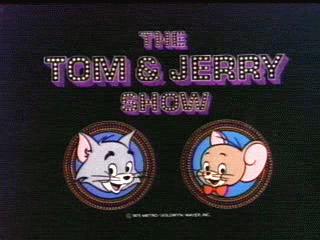
The Tom & Jerry Show is an American animated television series produced by Hanna-Barbera Productions in association with MGM Television. Based on the Tom and Jerry theatrical cartoon series, which was created by H-B co-founders and former MGM cartoon studio staff William Hanna and Joseph Barbera, the show originally aired on ABC from September 6 to December 13, 1975 as the first half of The Tom and Jerry/Grape Ape/Mumbly Show, with The Great Grape Ape Show representing the series' second half and The Mumbly Cartoon Show representing the series' third half. This series marked the first time that Tom and Jerry appeared in animated installments produced specifically for television.
Tom and Jerry Golden Collection was a scrapped series of two-disc DVD and Blu-ray sets produced by Warner Home Video that was expected to collect all 161 theatrical Tom and Jerry cartoon shorts released by Metro-Goldwyn-Mayer from the 1940s through the 1960s. Only the first of the three planned volumes was released, on October 25, 2011. It features 37 shorts, roughly one-third of the 113 Tom and Jerry shorts that had been included in the Tom and Jerry Spotlight Collection, a previous DVD series that focused on the shorts directed by William Hanna and Joseph Barbera from 1940 to 1958.

The Tom and Jerry Deluxe Anniversary Collection is a two-disc DVD set, released by Warner Home Video.
Events in 1912 in animation.
